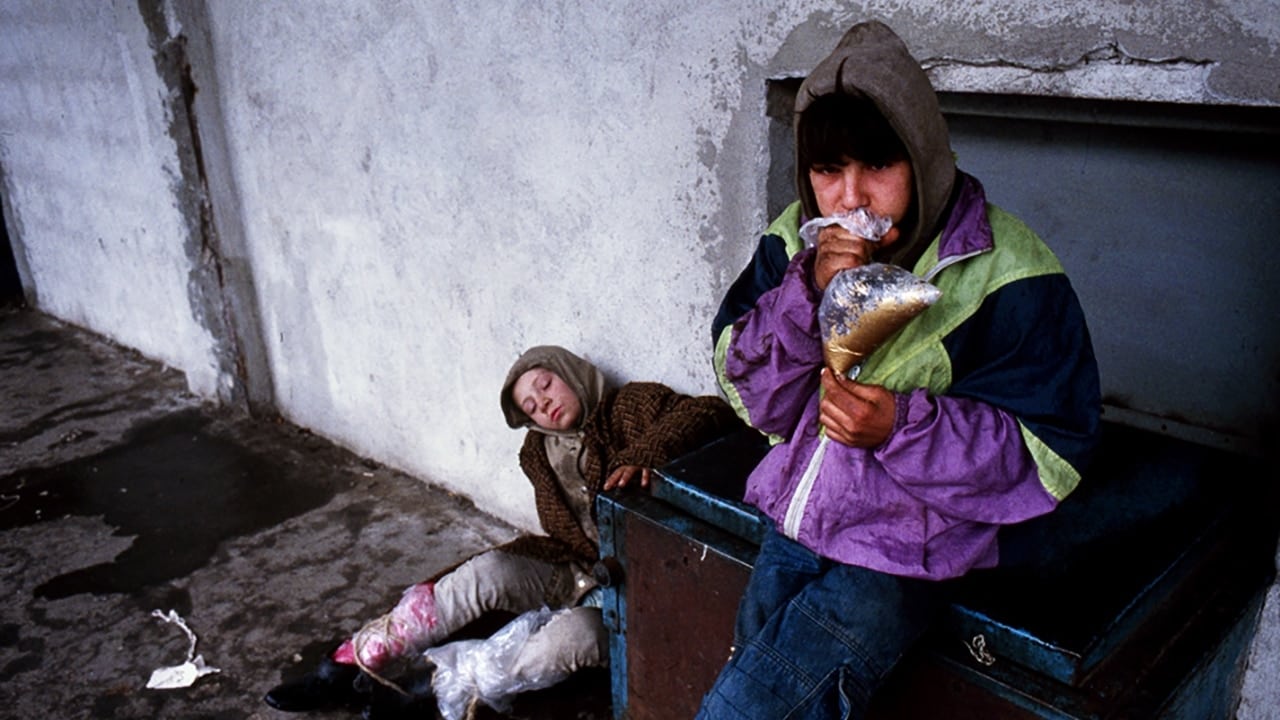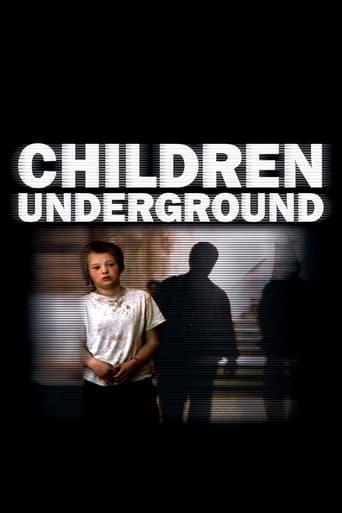

We all know the existence of Street children, the news keep broadcasting the footage of them constantly, and we all feel sympathy for them when we are watching it. But how long we keep that sympathy on our mind after watching those footage? couple of weeks? a day? I guess the most of us just forget about it in couple of hours because we all have own life and we all have something to do.But this film, Children Underground, have so much impact, and got me thinking about those street children for almost a month since I watched it. The most heart breaking scene is one of the kids cut himself just because he took other kids to the wrong park by mistake, and the other kids blamed him for it. He cut himself from his guilty feeling, and that was so sad because he think that's the only way to gain his forgiveness, and what makes it worse is that the adult who are supposed to be there and teach him those stuff is not around him.This film gave me so many "what if" I've never even thought about. What if I was born as a orphan? What if I couldn't fit in there? What if the only way to feel safe is using that paint thing? and I realized I might be just like those kids if I wasn't born to my parents.The film have so much impact and message, and would definitely make you think about something, something strong.
... View MoreIf you like documentaries,if you like good movies this movie should be on your list...if you think well let's think a little bit about our world and after the movie well let's play pool it won't work!!!This documentary in all its brutality in all its incomplete and not perfect camera ,storytelling(there is no)...in all its simplicity it gives you a punch in your stomach...because as i am one of you who will read it right now....we do care for other people,,,but we have out distance and we can easily drink our coke while watching....well these children live hell,live in poverty and that is no movie ...this is their life!Well not to sound to snobbiest watch this movie but please do something...if not there in your hometown love and mercy p.s.:snobs like me still didn't find time to spend any money
... View MoreSpoilers (for a documentary)I have just watched the DVD for Children Underground and found it to be very disturbing, as it should be. The situation of the homeless children isn't all that different from the homeless here in the states. The scope of the problem in Romania is larger, but the film only focuses on a small number of children. They are drug addicted, mischievous, and seemingly addicted to living on the street. A group of social workers in a shelter bring up the issue of how children become accustomed to living on the street are not able to adapt to shelter life. I can't recall another documentary touching on the idea of how difficult it is to help certain people, even when resources are available to do so. Medicine is expensive and clinics can not afford to waste it on addicts, shelters can not afford to provide for those deemed incapable of rehabilitation. Even if the children want help, and many don't, or don't appear to know how to accept it, they must be prepared even before being brought into a shelter. The damage done to these kids isn't easy to diagnose or repair. They may have suffered at home, been made despondent extreme poverty, and have psychiatric conditions. Once they are on the street they need to be "deprogrammed" before they can begin to change their ways. In my opinion, they will never be all right, they will always be 'shell shocked' by their experiences.We hear about one girl that is at times proud of how "street" she is and at other times hardworking and attending school. Unfortunately, she is routinely suspended from school due to her addiction to huffing paint. The drug of choice for these kids is Aurolac, or paint. I saw a documentary on Seattle's street kids and many of them were addicted to heroin. Heroin is a much more dangerous drug, and one wonders if the kids addicted to paint in the movie will eventually move on to harder drugs.Ana doesn't talk about her parents or her situation. She has run away from home many times, and she has taken her younger brother with her to live on the streets. When the filmmakers meet her parents we learn that they are unemployed and unable to support their kids. The stepfather says that he doesn't beat her, but talks down to her, and says that he almost left their mother because of the kids. The parents ask the children whether they want to stay or go to back to the city, and it is hard to tell what they really want her to do. I felt like they were pushing her away, getting her to make the decision so that they can't be held liable for abandonment charges. The stepfather even says "this isn't abandonment" in response to her decision. Perhaps the most disconcerting moment for me was watching the "Where are they now?" extras on the DVD and learning that Ana's mother gave birth to twins in 2002. I just thought, after all I have seen and learned, Why? Why would she bring two more children into the world when she literally can not provide even a basic existence for her current children?The movie has the stories of other street children. Many similarities are found in the stories. There are, in fact, tens of thousands of similar stories in Romania. We are left to wonder the eventual outcome. Will these children be ignored and brushed aside by the people walking the streets, and by their government. Will the generation of homeless be left to die out? Will they get pregnant and raise their children on the streets, creating a new generation of street kids? What are the current conditions in Romania? Is there a steady stream of new children coming to live on the streets?
... View MoreI was curious to see this film having spent time in Bucharest several years ago. I never ventured onto the subway but did have occasion to go into the underground....which is necessary in many European cities since the streets are often quite wide and difficult to cross. This is particularly true in Bucharest where everything that the former dictator built-- the buildings, the roads, etc. all appear to be on steroids. Add to this the fact that so many of the nominated documentaries (and foreign films) are never properly distributed here --even in NYC..In any event, this is a very disturbing film; at times difficult to watch and as I recall the film makers received considerable criticism on their decision not to "interfere" with what was taking place --to allow the physical and mental abuse of the children by the older "leaders of the pack" and by the parents who also appear in the film as well as the lethal consumption of lead paint taken by the children to get them high and that clearly was contributing to their deteriation. It was stark, disturbing, very difficult to watch but incredible filmmaking , nonetheless.
... View More